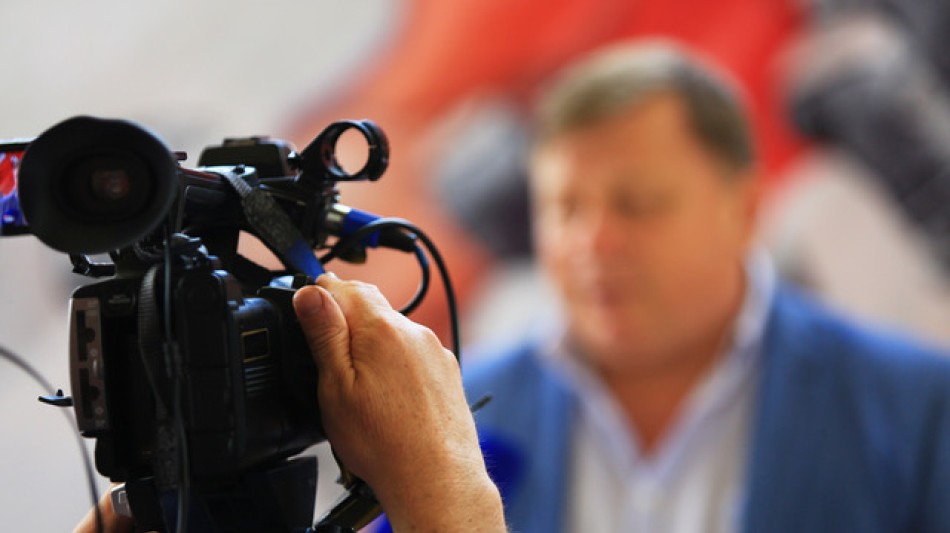
-
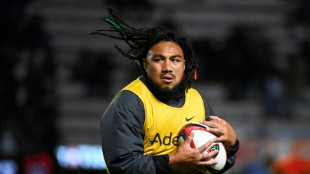 Ex-All Black Nonu extends Toulon deal, aged 43
Ex-All Black Nonu extends Toulon deal, aged 43
-
Stocks diverge as US tariff deadline looms

-
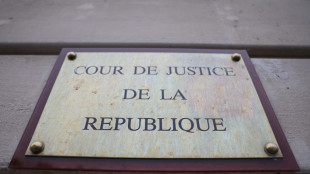 French court dismisses government Covid response probe
French court dismisses government Covid response probe
-
Children's camp confirms 27 dead, with Texas flood toll over 80
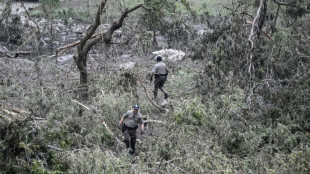
-
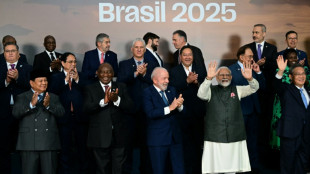 BRICS' criticism brings Trump 10% tariff threat
BRICS' criticism brings Trump 10% tariff threat
-
Houses made from rice: Kyrgyzstan's eco-friendly revolution
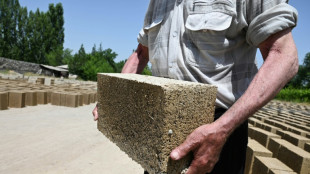
-
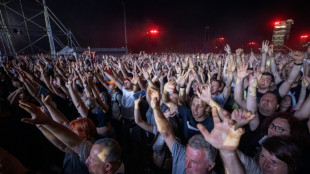 Croatia govt lashed over 'disgraceful neo-fascist Woodstock'
Croatia govt lashed over 'disgraceful neo-fascist Woodstock'
-
Victims of London 7/7 attacks remembered as king hails 'spirit of unity'
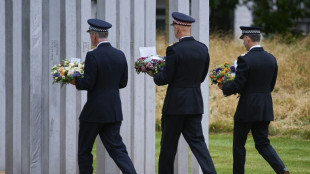
-
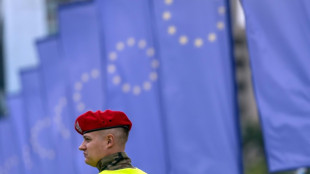 Poland starts border checks with Germany in anti-migrant clampdown
Poland starts border checks with Germany in anti-migrant clampdown
-
Wiaan Mulder: slow ascent to Test cricket's batting heights
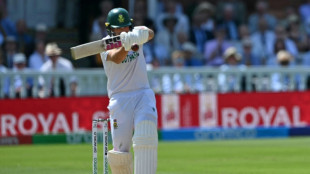
-
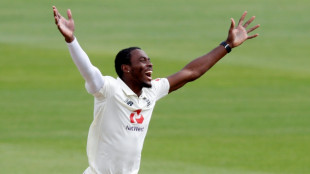 England coach McCullum says paceman Archer 'ready to go' against India
England coach McCullum says paceman Archer 'ready to go' against India
-
Djokovic, Sinner on Wimbledon collision course

-
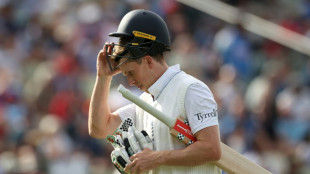 Vaughan says Crawley 'lucky' to have so many England caps
Vaughan says Crawley 'lucky' to have so many England caps
-
Russian forces claim first foothold in new Ukraine region
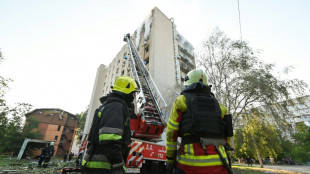
-
 US envoy says satisfied with Lebanese response on disarming of Hezbollah
US envoy says satisfied with Lebanese response on disarming of Hezbollah
-
European stocks, dollar firm as US tariff deadline looms

-
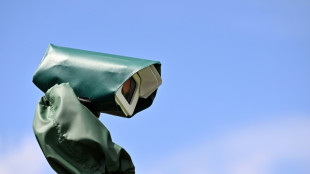 Wimbledon blames 'human error' for embarrassing line-calling glitch
Wimbledon blames 'human error' for embarrassing line-calling glitch
-
Three things learned from British Grand Prix

-
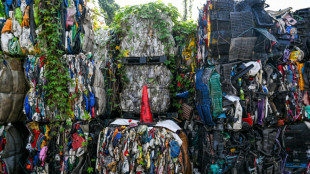 NGOs laud tougher Malaysia plastic trash import laws
NGOs laud tougher Malaysia plastic trash import laws
-
Mulder makes highest South Africa Test score
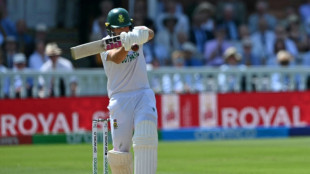
-
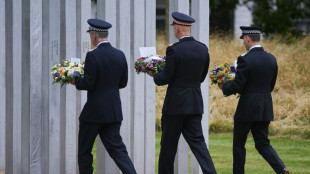 UK marks London 7/7 attacks as king hails 'spirit of unity'
UK marks London 7/7 attacks as king hails 'spirit of unity'
-
Apple appeals 500-mn-euro EU fine
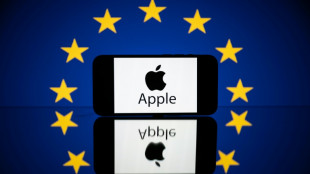
-
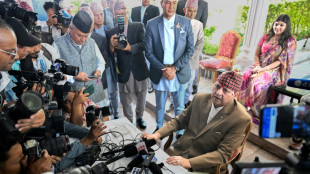 Crowds celebrate Nepal ex-king's birthday in show of support
Crowds celebrate Nepal ex-king's birthday in show of support
-
Bali flights nixed after huge Indonesia volcano eruption

-
 Hamas, Israel resume talks as Netanyahu set to meet Trump
Hamas, Israel resume talks as Netanyahu set to meet Trump
-
Hong Kong fans queue for opening of Cristiano Ronaldo exhibition
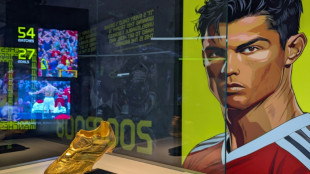
-
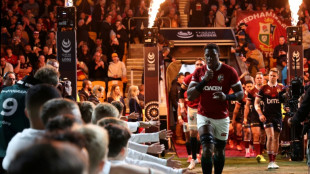 Itoje back as Lions take no chances against ACT Brumbies
Itoje back as Lions take no chances against ACT Brumbies
-
Stock markets struggle as Trump's tariff deadline looms

-
 Nearly 450,000 Afghans left Iran since June 1: IOM
Nearly 450,000 Afghans left Iran since June 1: IOM
-
North Korea bars Western influencers from trade fair tour
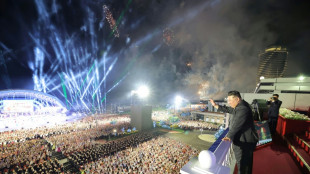
-
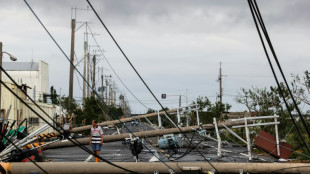 Typhoon Danas kills two, injures hundreds in Taiwan
Typhoon Danas kills two, injures hundreds in Taiwan
-
Dutch coastal village turns to tech to find lost fishermen
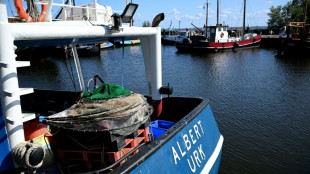
-
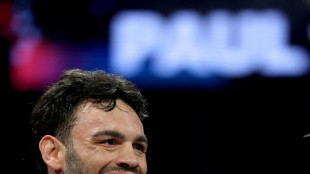 Boxer Chavez's appeal against arrest if deported from US rejected: Mexico prosecutor
Boxer Chavez's appeal against arrest if deported from US rejected: Mexico prosecutor
-
India captain Gill hailed back home after 'brilliant' Test win
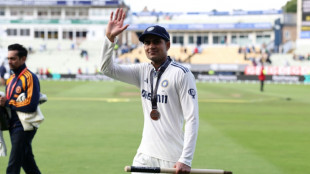
-
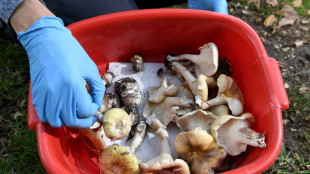 The making of Australia's mushroom murders
The making of Australia's mushroom murders
-
Indonesia volcano spews 18-kilometre ash tower
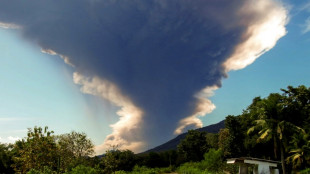
-
 Youthful Chelsea ready for Thiago Silva reunion at Club World Cup
Youthful Chelsea ready for Thiago Silva reunion at Club World Cup
-
Australian inquiry cites racism in Indigenous shooting
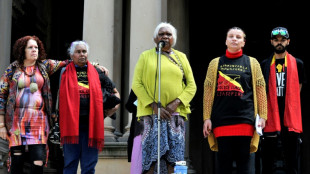
-
 Djokovic wary despite Wimbledon form, dominant Sinner faces Dimitrov
Djokovic wary despite Wimbledon form, dominant Sinner faces Dimitrov
-
Australian woman found guilty of triple murder with toxic mushrooms
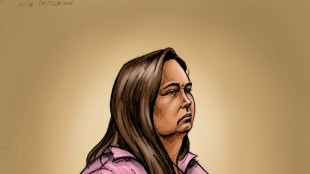
-
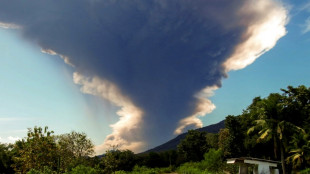 Indonesia volcano spews 18-kilometre ash tower: agency
Indonesia volcano spews 18-kilometre ash tower: agency
-
Trump says to send first tariff letters on Monday

-
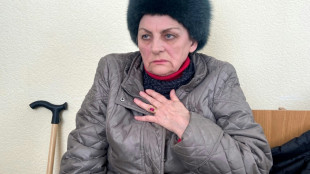 The strange case of Evgeniya Mayboroda, Russia's rebel retiree
The strange case of Evgeniya Mayboroda, Russia's rebel retiree
-
Asian markets drop as Trump's tariff deadline looms

-
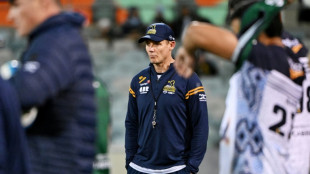 Under-strength Brumbies eye 'big opportunity' against Lions
Under-strength Brumbies eye 'big opportunity' against Lions
-
Macron to rekindle relationship with Francophile King Charles on UK visit
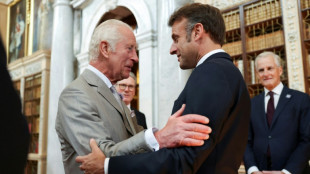
-
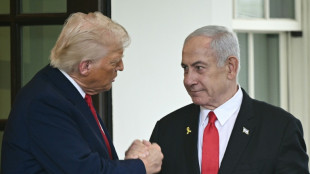 Trump hosts Netanyahu, hopes for Israel-Hamas deal 'this week'
Trump hosts Netanyahu, hopes for Israel-Hamas deal 'this week'
-
Pressed to confess: Japan accused of 'hostage justice'
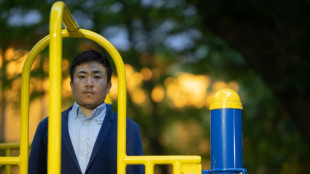
-
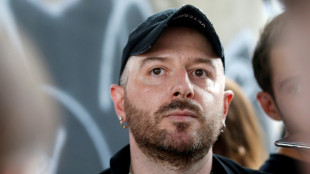 Demna to bow out at Balenciaga in Paris Haute Couture Week
Demna to bow out at Balenciaga in Paris Haute Couture Week
-
Host of internationals in Australia-New Zealand squad to face Lions
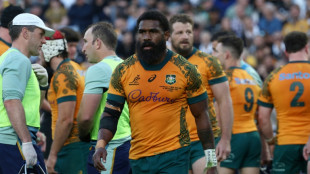

ALS Community Files Citizens’ Petition asking FDA to Approve NurOwn Stem Cell Therapy
New and Unprecedented Survival, Respiratory, and Biomarker Data Prove
that NurOwn Helps People with ALS Live Longer and Live Stronger
BREMERTON, WA / ACCESS Newswire / July 7, 2025 / On July 4, 1939, Lou Gehrig delivered his iconic "luckiest man" speech, announcing his retirement from the New York Yankees. On that day, ALS ended his Hall of Fame career. Less than two years later, ALS ended his life at just 37 years old.
In the last 86 years, the lethal outcome has not changed. ALS is a cruel, paralyzing and 100% fatal disease. But today, the ALS community has hope. A coalition of ALS patients and family members has filed a Citizens' Petition with the FDA, requesting the approval of NurOwn, a neurotrophically-enhanced stem cell therapy.
Backed by a decade of real-world data from the NurOwn trials and Expanded Access Program (EAP), the 309-page Citizens' Petition details the unprecedented survival, respiratory, and biomarker data for the FDA's consideration. The new evidence is supported by testimony from top ALS neurologists who were the trial's principal investigators, and the "totality of the evidence" from the Phase 3 trial. And, it aligns with real-world evidence where trial participants (now-unblinded) and their treating neurologists have proclaimed that NurOwn improves how people with ALS "feel, function and survive."
NurOwn: A Revolutionary Approach to ALS Treatment
Developed by BrainStorm Cell Therapeutics, NurOwn combines the restorative potential of autologous mesenchymal stem cells with the regenerative power of neurotrophic factors, which are like "Miracle-Gro" for dying motor neurons. NurOwn uses a patient's own stem cells that work like a FedEx truck, delivering nano-packages of neurotrophic factors and immunomodulatory cytokines directly to damaged motor neurons.
The results are profound. Within days, trial participants reported halting of symptoms like fasciculations, cramping and clonus; and some improvements in function. With additional doses, the EAP data confirm NurOwn's ability to slow lethal ALS progression, improve function, restore breathing, and extend survival - offering a lifeline to those battling this 100% fatal and paralyzing disease.
Unprecedented Survival and Respiratory Data
Survival data have long been the gold standard for FDA approvals; and as Commissioner Makary has emphasized: "gold standard science and common sense" will guide this FDA's decisions. To that end, Petitioners have submitted survival data derived from their own real-world evidence over the past decade. These survival data are unprecedented in ALS clinical trial history.
Five-Year Survival: 100% in NurOwn EAP vs. 20% in ALS natural history.
All EAP participants (n=10) achieved five-year survival without tracheostomies.Extended Tracheostomy-Free Survival (TFS): 7-year median tracheostomy-free survival (range from 5 to 8.5 years), far surpassing the 2.5- to 3-year median in ALS natural history data.
Progression-Free Survival (PFS): When patients received NurOwn, they experienced PFS ranging from a few months up to 17 months.
(See Petition's Emergent Fact section C at pg 19-33).
At the FDA Advisory Committee meeting for NurOwn in 2023, Dr. Anthony Windebank of Mayo presented the clinical trial data and shared his expert opinion about the progression-free survival that he and other experienced trial investigators had witnessed - unprecedented in their prolific 40+ year neurology practices:
"I think this data is compelling & it should be approved…. While not everyone responds to the treatment,
there are clearly a significant number who do. I have clearly seen some people
stabilize in a way that I have never seen in any other trial.
In fact, in the small number of people who participated in EAP and received 6-9 treatments, there were people
who stabilized while on NurOwn in the trial. In the interval before they were in the EAP
- which was over a year or more in some cases - these participants deteriorated, then again
stabilized in the additional [EAP] treatment period. There were some who IMPROVED their score.
Other investigators who have been working 'hands on' with the participants
in the trial have seen similar responses...."
Dr. Windebank's testimony underscores the unprecedented impact of NurOwn on people with ALS. And the NurOwn survival data is buttressed by other compelling efficacy data also detailed in the Citizen's Petition:
Long-term Preservation of Respiratory Function: A 5- to 8-year delay in the need for non-invasive ventilation (NIV) over a 15-month natural history; and significant stabilization or improvement in Forced Vital Capacity (FVC), both key predictors of ALS survival.
(See Emergent Fact section D at pg 34-44).Long-term Slowing of ALS Progression: Up to an 85% slowing in ALS progression rate, from a trial qualification of a minimum loss of 1 point per month to 0.15 points per month after receiving NurOwn. (See Emergent Fact section F at pg 44-46).
Biomarker Evidence: 23 CSF biomarkers demonstrate statistically significant changes and NurOwn's target engagement across pathways of neuroprotection, neuroinflammation, and neurodegeneration. (See Fact section M at pgs 156-166).
Real-World Evidence and Patient Experiences
Our Citizens' Petition also leverages real-world evidence (RWE) and real-world data (RWD) from the EAP and Right to Try - consistent with the Congressional intent of the 21st Century Cures Act. Multiple trial participants testified, submitted Public Comments and shared their RWE, which aligns with the type of efficacy evidence specified in the ALS Guidance Document and 21st Century Cures.
At the time of the advisory committee meeting in 2023, many trial participants reported tangible improvements in how they felt and functioned, and hence, an improved quality of life. (See sections H & I, pgs. 91-127). Their testimony was supported by video evidence documenting those improvements and by the opinions from multiple treating neurologists outside the clinical trial. For example, neuromuscular specialist Dr. Danielle Geraldi-Samara submitted a Public Comment to the FDA about what she observed in many of her patients participating in the NurOwn Phase 3 trial and EAP:
"The real world evidence could not be more striking. I have known patients nearly immobile
who gained some functionality in their gait, patients with severe dysarthria become intelligible,
patients who could not manage the fine motor skill needed to button or zipper,
finally able to dress independently.
I have patients with solid plateaus [in ALSFRS-R scores] over the course of a year."
Her clinical observations of progression-free survival after the NurOwn trial mirror those of Dr. Windebank and the other investigators during the trial and EAP. Now that the Phase 3 trial has been unblinded, multiple trial participants have confirmation that NurOwn halted their lethal progression and helped some people regain function. Our lived patient experiences now have both validation and vindication. When people are becoming paralyzed, it's common sense that we know when a therapy helps us function. Our lived patient experiences aren't anecdotal hyperbole; they are evidence.
And as Commissioner Makary recently said at the Gene and Cell Therapy Forum, there is value in learning from "n of 1" cases. Combined, the EAP "n of 10" and the right to try "n of 1" illustrate compelling and consistent, dose-dependent evidence of efficacy.
Reinforcing the efficacy data, Navy pilot Matt Bellina shared the RWE and RWD contained in his VA medical records in hisblog and onsocial media. Matt too experienced unprecedented clinically meaningful improvements after receiving 7 doses of NurOwn via Right to Try. Although he was a slow progressor, diagnosed in 2011, Matt's ALS had progressed significantly. He was choking on food, using NIV to breathe at night; had little use of his hands; and could not stand without assistance. His data are informative, supporting evidence of efficacy because he is the only person in the US who received 6 consecutive doses; because he was the only "slow progressor" to receive NurOwn; and because his baseline score was 21/48 on the ALS Functional rating scale.
Matt's large magnitude, dose-dependent improvement in function was immediate and obvious. (See section J at pgs 128-133). Matt has video documenting him standing out of a wheelchair unassisted - the first time in two years. He stopped choking on food. He improved his functional score by 6 points. His FVC stabilized and he stopped using NIV to breathe for more than 4 years. NurOwn interrupted Matt's lethal trajectory to death.
Commissioner Makary has repeatedly offered that the FDA, under President Trump, "believes in both the spirit and the letter of right to try." Thus, Petitioners hope that this FDA will consider and believe the RWE from the very veteran for whom President Trump's Right to Try law was named.
Totality of Evidence Methodology for Rare Diseases
To determine if a therapy can meet the approval threshold of "substantial evidence," the FDA asks if a therapy improves how people "feel, function or survive." Regulators look principally at the trial's primary endpoint at one fixed point in time at the end of the trial. But in heterogeneous rare diseases with small populations and short placebo-controlled trials, efficacy signals can be missed. Hence, it's much more likely to result in a Type II statistical error: delaying or denying approval of a drug that does work. In a terminal disease like ALS, Type II errors cause ongoing paralysis and death.
Thus, the Citizens' Petition reasserts the propriety of the FDA's use of the "totality of evidence" statistical methodology to assess NurOwn's efficacy. This approach - widely accepted in oncology for evaluating therapies in heterogeneous, rare populations - strengthens the case for NurOwn's approval by highlighting the consistent benefits in the subgroup of ALS patients earlier in ALS progression (akin to a drug working on stage I and II cancer patients).
When including the trial population with the most advanced ALS (akin to stage III/IV cancer), the trial did not meet its endpoints. But when looking at the patients earlier in ALS progression, NurOwn met statistical significance. Using the "totality of the evidence" methodology, renowned biostatistician and Wilkes Award winner, Dr. Lee-Jen Wei of Harvard / Dana Farber analyzed the multiple trial endpoints, across multiple functional scale domains, at multiple time points throughout the 28-week trial. He testified at the Advisory Committee meeting that these p-values were: 0.045, 0.021, 0.007 and 0.005; thus providing more supporting evidence of NurOwn's efficacy.
Meeting FDA Approval Thresholds
The Citizens' Petition asserts that NurOwn achieves the statutory thresholds for multiple FDA approval pathways:
1. Traditional Approval
NurOwn's survival data, including the five-year survival, TFS, PFS and OS, meet the "substantial evidence" threshold of one well-controlled trial plus supporting evidence. This conclusion aligns with the FDA's recognition that survival data are the gold standard in FDA approvals. Thus the diversity and magnitude of NurOwn's survival outcomes fulfills both the "quality" and "quantity" requirements of "substantial evidence." (See Emergent Fact section C, pgs. 19-33).
2. Accelerated Approval
NurOwn meets the "reasonable likelihood" threshold for accelerated approval. The survival data from the "n of 10" EAP are "reasonably likely to predict" a favorable impact on irreversible mortality of the 32,000 people with ALS. This survival data far surpasses survival data supporting the accelerated approval of many cancer therapies. (See comparison at Memorandum section I, pgs. 191-209 and Exs. A & B).
NurOwn's respiratory data, including delays in time-to-tracheostomy, time-to-NIV, and improved FVC, are also reasonably likely to predict a favorable impact on mortality. (See Emergent Fact section D, pgs. 34-43 and Memorandum II.C pgs. 219-222).
NurOwn's CSF biomarker data are also reasonably likely to predict a "clinically meaningful" effect. NurOwn caused statistically significant changes in first-in-class CSF biomarkers - regardless of disease severity and only in the NurOwn treatment arm. Of the 45 pre-specified biomarkers tested, 23 had statistically significant changes and 15/23 had p-values ≤0.001. These CSF biomarkers provide objective biological evidence of target engagement across pathways of neuroinflammation, neurodegeneration, and neuroprotection. (See Petition Facts section M, pgs. 156-166 and Memorandum section II.C pgs. 219-222).
Additionally, Brainstorm Cell has shared neurofilament light biomarker data in a poster presentation at the 2024 NEALS conference. As the FDA has acknowledged, as ALS progression advances, harmful NfL increases, reflecting more diseased and dying motor neurons. At the end of the Phase 3 trial, there was a 9.4% delta between the NurOwn and placebo arm (p=.037).
But in those 10 from EAP who were earlier in progression at the start of the Phase 3 trial, the delta between the NurOwn and placebo arms was more apparent. At the end of Phase 3, the 4/10 on placebo had a 37% increase in harmful NfL whereas the 6/10 on NurOwn had a 4% decrease in NfL. With the additional dosing in EAP, the 4/10 in the placebo-crossover group finally experienced a 5% decline in harmful NfL, whereas people on NurOwn maintained a 36% decrease from baseline. Not surprisingly, those who received the most doses of NurOwn and received it earliest in ALS progression had the largest magnitude functional changes and as well as the largest decrease in NfL levels - with two people who received 9 total doses having a decrease of ≥60% in harmful NfL levels. (See table in section II.C.2.a on page 222).
As such, the changes in CSF biomarkers are reasonably likely to predict a clinically meaningful benefit, and thus, the third way that NurOwn can meet the threshold for accelerated approval.
3. Conditional Approval
NurOwn aligns with Commissioner Makary's proposed "plausible mechanism of action" threshold for conditional approval. Both stem cell technology and neurotrophic factors are plausible mechanisms of action in ALS; and NurOwn's CSF biomarker data confirms biological plausibility. (See Petition Fact section N, pgs. 173-176 and Memorandum section II.G at pgs. 234-241).
A Call for De Novo Review and Expedited Action
The Citizens' Petition requests a de novo review by the FDA. The Center for Biologics Evaluation and Research (CBER) has not ever considered the EAP survival, respiratory, or biomarker data, nor has it considered the Right to Try data from Navy pilot Matt Bellina, nor the unblinded and now corroborated RWE/RWD from people who have benefitted from NurOwn since 2011. The Petitioners also request that CBER use the Commissioner's new Priority Voucher to expedite review. The Citizens' Petition also proposes that FDA consider the far-reaching benefits of a Phase 4 post-marketing study, including a biorepository and natural history/exposome database, which aligns with the FDA Priorities outlined by Doctors Makary and Prasad.
A Historic Moment for the ALS Community
At the recent 2025 Gene and Cell Therapy Forum, Secretary Kennedy shared that the FDA will do everything it can to "accelerate approvals for rare diseases." And in their Joint OpEd for JAMA Viewpoints, Commissioner Makary and Director Prasad said the FDA is committed to "rapidly usher to market new products with transformational potential." In furtherance of that commitment, Director Prasad told the rare disease community that the FDA will:
"approve anything that is an incremental advancement"
accelerate therapies by "taking action at the first sign of promise for rare diseases" and at the "earliest sign of statistical evidence"
monitor people post-market to "ensure people live longer, stronger."
The Citizens' Petition argues that NurOwn has more than transformational potential. Rather, the survival and respiratory data, along with 8 years of RWE, demonstrate its already transformational impact on people living with ALS. Thus, the ALS community calls on the FDA to approve NurOwn, honoring its commitment to marry "gold standard science and common sense."
ALS is stealing decades from our lifespans. Just as the FDA acts with urgency for people with terminal cancer, the Citizens' Petition asks the FDA to act with the same urgency as ALS is killing our motor neurons. Please don't let another generation of people with ALS die waiting when we know a stem cell therapy can help us live.
About ALS
ALS is a 100% fatal, heterogeneous, rare neurodegenerative disease. As motor neurons die, the brain can no longer communicate with the voluntary muscles, which slowly become paralyzed. For reasons researchers don't fully understand, ALS impacts only the motor neurons, not the sensory neurons. Thus, people with ALS still feel cramping, sensations, fasciculations and pain, but they can't move to respond to them. Ultimately, people lose the ability to walk, talk, move, eat, drink, swallow, and eventually, breathe.
About the Petitioners
The Petitioners are a coalition of people who received NurOwn and others with ALS who could not. We are committed to advancing research, treatment access, and policy changes for ALS.
Petitioners:
Nicholas Warack, Esq.
Matt Klingenberg - Phase 3 & EAP
Eric Stevens - Phase 3 & EAP
Joshua Smith - Phase 3 & EAP
Estate of Roberto Muggli - Phase 3 & EAP
Lesley Krummel - Phase 3
Estate of Kade Simons - Phase 3
Estate of Justin Rogers - Phase 3
Terri Pickering Saenz - Phase 2
Tara Collazo
Mayuri Saxena
Estate of Jamie Rose Berry
Estate of Patricia Manhardt
Shahriar Minokadeh, MD
Contact:
Nicholas Warack, Esq.
(mail to: [email protected])Mitze Klingenberg
(mail to: [email protected])
SOURCE: NurOwn Citizen's Petition
View the original press release on ACCESS Newswire
O.Karlsson--AMWN